The DTE Notebook for the Urban Organic Vegetable, Herb and Flower Gardener.
Saving Seeds from your favourite vegetables, herbs, and flowers!
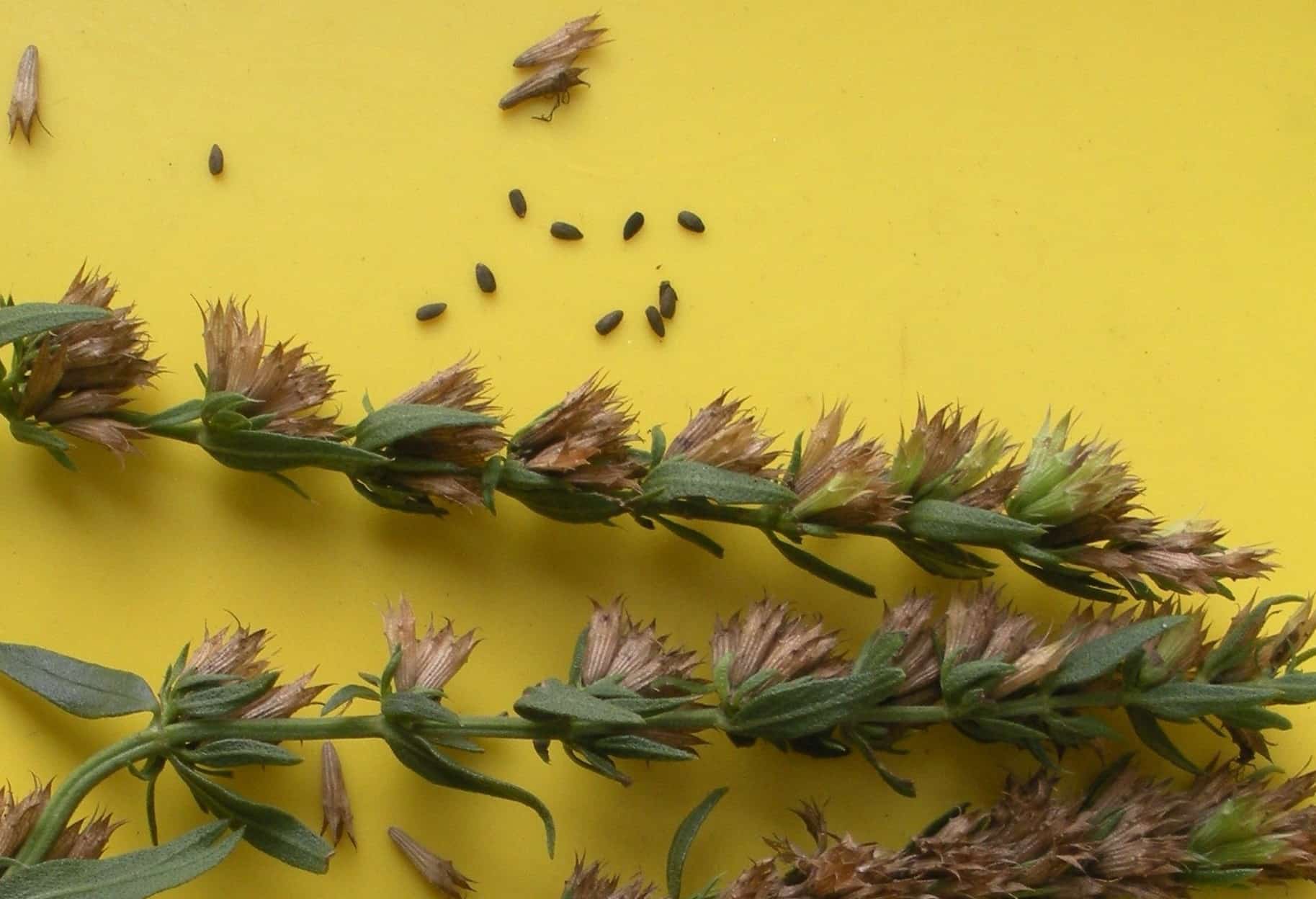
Article and photos by Rob Danforth
Remember that tomato you enjoyed more than any of the other varieties you tried? Why not save some seed and enjoy more of the same! Anyone who grows food plants and flowers, can also easily save some seeds!
Saving seed is a way to make careful selections of those plants you found either delicious or beautiful or both, and you wish to grow them again. You will not have to save seed every year, as your collection may provide enough seed to last a few years depending on the amount you collect and the amount you intend to plant next season .
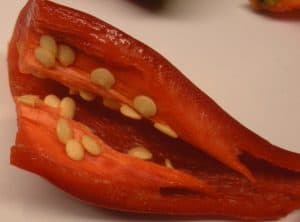
If this is a first time, start small with seeds from one or two special plants and then as your confidence grows, increase the number of seeds you save from different varieties of both food plants and flowers.
Unless you wish to experiment, do not save seed from “F1” or “F2” plants (see [*2]). These are hybrid plants (not GMO) in which cross-pollination has been carefully controlled by the gardeners. However, the 2nd generation seed can contain throwbacks and you may get unexpected surprises in performance, size, taste, colour, or quality. Be aware also, that cross-pollination in your own garden or between community gardens can change the seed and future offspring (e.g., your plants crossed with a different variety in a neighbouring garden — our green zucchini crossed with our yellow zucchini to yield bi-colour summer squash).
What and when to save:
- Choose the healthiest plants — the best, not the poor ones you let limp along to the finish line – and for insurance, save a mix of seed from at least 2 different plants (e.g., 2 cilantro plants; 2 beefsteak tomato plants). Avoid all diseased plants regardless of when the disease strikes!
- Leave the selected flowers and fruit on the plants for as long as possible near the end of the season. Ready seeds tend to look dry and brown, tawney, black, or white-ish. Seeds are powerhouses with all they need to start growing (See [*1] article on Test for Seed Viability)! Let them get fully charged before you collect!
- Be watchful: seed production takes a lot of energy from plants, productivity slows, and plants show signs of being worn out (e.g., bush beans). Collect your chosen seed before the birds eat them all, or cover specific plants with bird nets.
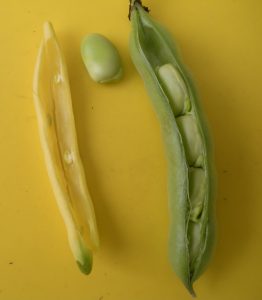
Four easy collection methods: “Cut & Scrape”, “Thresh”, “Scrape & Wash”, and “Pick up” from the ground.
1 Cut & Scrape relatively clean seed out of the pods (e.g., peppers and beans).
2 Thresh dry seed heads in a paper bag, pail, or bucket. Place the stalks with dry seed heads in a bag and bang the bag against a firm surface, or bang dry pods against the inside of a pail or bucket (e.g., dill, hyssop, soybean). Then separate the seeds from the chaff (dried plant debris) on a sorting tray.
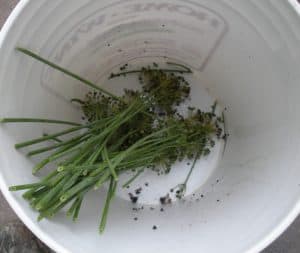
3 Scrape & Wash: cucumber, melon, & squash seeds are washed clean of the glue-like plant material and fluids. Finger scrub the seed in a water bath .
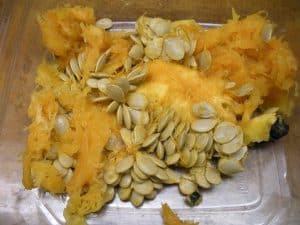
Tomato seeds are set in a container with water to ferment for up to 3 days to remove the jelly-like coating around the seeds. Caution: beyond 3 days, some seed will start to germinate and will have to be discarded.
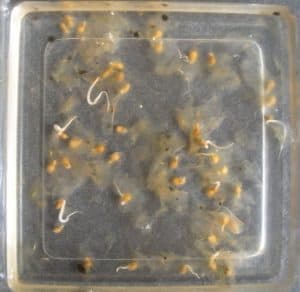
On day 3, live tomato seed will have dropped to the bottom. Pour off the smelly fermentation liquid as well as the floating dead seed. Tip: You can spread tomato seeds – jelly and all – on a firm surface to thoroughly dry, then carefully scrape them up, and try to separate out the seed.
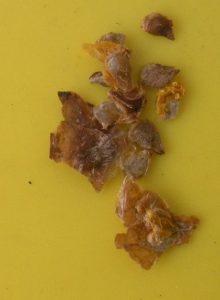
Not pretty, but it does work.
4 Pick up easy-to-find seeds from the ground (e.g., Nasturtium seed – almost chickpea size and similar in colour).
Two additional steps to separate seed from chaff are winnowing (pour seed + chaff from one bucket into a second bucket while the wind or a fan blows the chaff away to the side) and sifting seed through a screen suited to the size of seed or chaff you wish to screen out. If your seed collections are quite large, you might look into these additional steps.
Storage: thoroughly dry all seeds (generally 2 weeks) spread out on a firm surface (e.g., baking sheet) – not in clumps and not on any paper — to prevent fungus and rot, write name & year of collection on the package (some gardeners include location), and store seeds cool, dry, and dark.
Basic Tools :
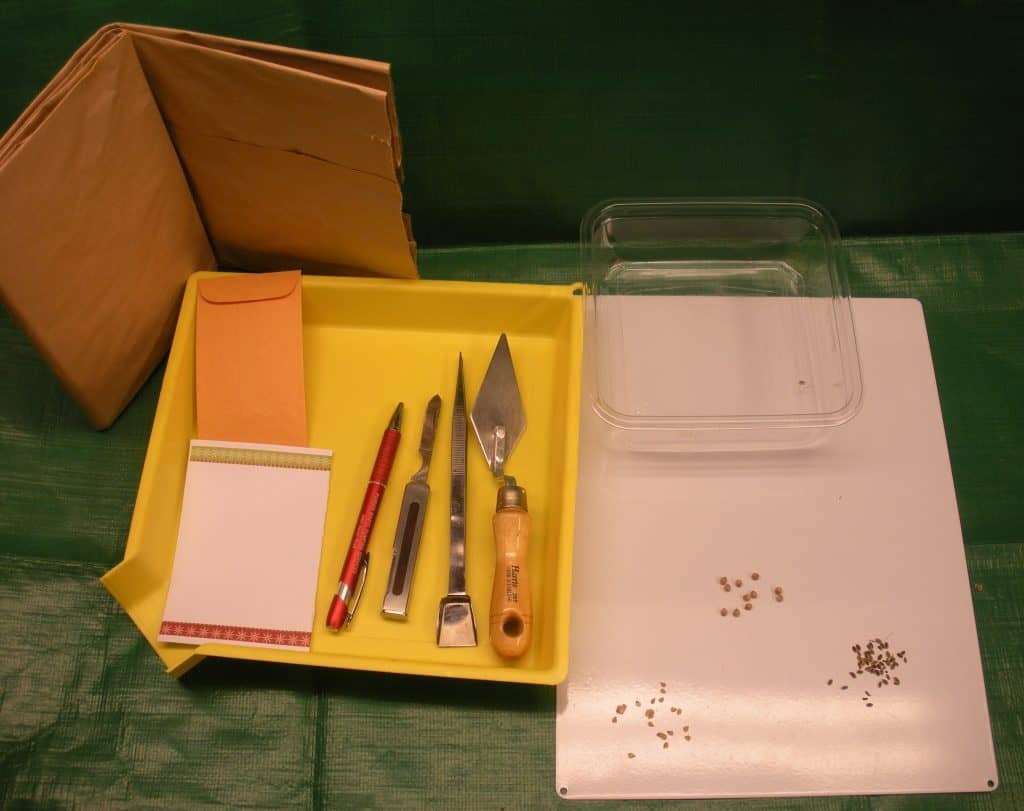
- Scraping & sorting tool (e.g., putty knife, butter knife, pointing trowel, &/or tweezers).
- Container for wet seed processing (washing and/or fermenting).
- Bag, pail, or bucket for threshing (Tip: a pail or bucket is more convenient than a bag).
- Shallow container for drying and sorting (e.g., serving tray or baking sheet).
- Seed envelopes purchased, or do-it-yourself packets made from recycled envelopes.
- Pen, pencil, or marker.
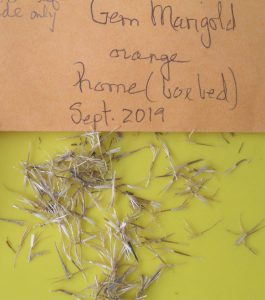
Easiest seeds for beginning savers include all beans and peppers (cut & scrape); dill, coriander, garlic chive, and soy bean (thresh); and nasturtiums (pick large, tawney coloured seed up off soil). Tomato seed (water fermented for best results – or just plain dried) and squash (scrape & wash) are a little more work but still very easy to do.
Seed Life — A general rule-of-thumb for many seeds is 2 to 3 years but some will last for 6 years (e.g., lettuce — and weeds!). All seeds do not die on their best-before-date, but you may have to plant 6 old seeds to get 2 plants (See [*1] – article on Test for Seed Viability).
We still buy organic seed to try new cultivars, to replace F1 & F2 plants, and to save labour; however, we also collect seeds from special plants every year so we have fresh seed for the next season. Since our urban gardens are reasonably small, our seed collections are very modest in size. How many seeds of any one kind do you actually plant in a season? Save accordingly!
Why not add some seed saving to your gardening practices? It is easy and uncomplicated with definite rewards. Happy Gardening!
[*1] – Articles: https://ottawa.cog.ca/seasonal-resources/
[*2] F1 hybrid seeds refers to the selective breeding of a plant by cross pollinating two different parent plants. In genetics, the term is an abbreviation for Filial 1- literally “first children. An “F2” is the next generation, or the result of self or cross pollination of F1s